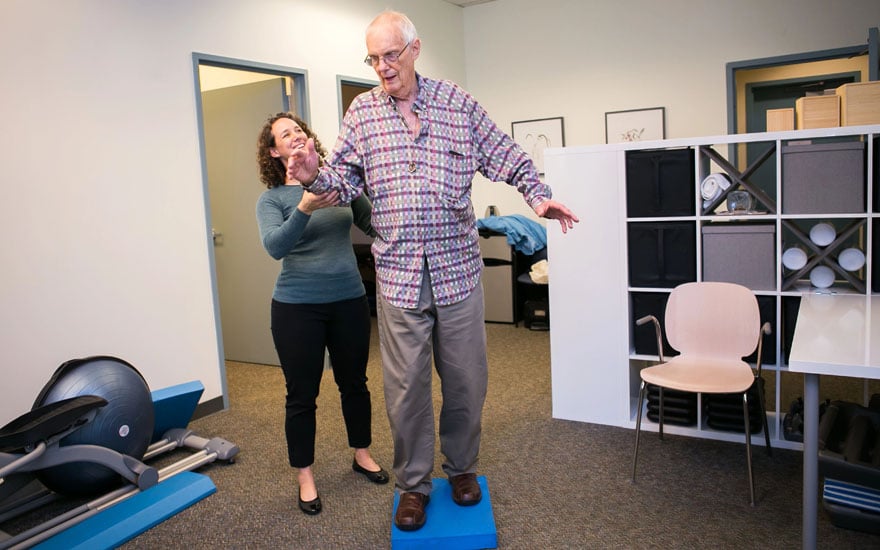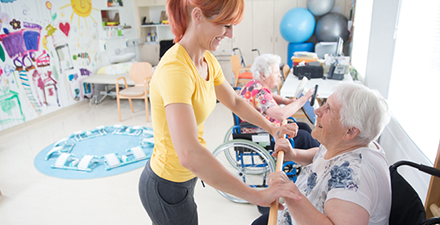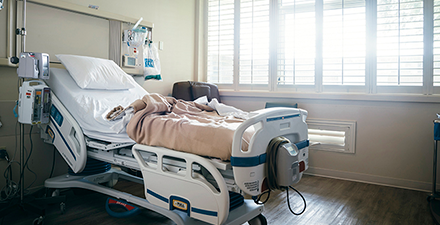
Parkinson disease is a progressive neurological condition. While there is no cure, a physical therapist can help you delay many of its adverse effects. Physical therapists also can help you manage your physical symptoms. They address problems that limit your ability to move, walk, or do your daily tasks.
Based on high-quality evidence from a 2021 review of 242 research articles, physical therapy is vital for managing Parkinson disease. This is true both in the early and later stages of the disease.
High-quality evidence means that the researchers are very confident in the findings. Also, when evidence is of high quality, more research is not likely to change the results. The bottom line: People with Parkinson disease can benefit greatly from physical therapy. Here’s how.
Physical Therapy in the Early Stages of Parkinson Disease
It is important to see a physical therapist as soon as possible after receiving a Parkinson diagnosis. A physical therapist can educate you and your caregivers on the physical effects of your condition. When symptoms are mild, they can help you slow their progression and address movement problems before they begin affecting your daily life.
Physical therapy can help you stay ahead of and manage mild symptoms and prepare for those that may develop. They will work with you to help you keep the strength and flexibility you need to continue doing things on your own.
Your physical therapist will design a treatment plan that includes prescribed exercises to meet your needs and goals. A key component of physical therapy is patient education. Your physical therapist will teach you strategies to help you:
- Keep your ability to move.
- Take care of yourself, your home, and work.
- Do activities you enjoy (such as gardening, sports, and other physical activities).
What About the Later Stages of the Disease?
Support from a physical therapist is important if symptoms start to affect your quality of life. So is continuing a regular exercise program.
Parkinson disease can make it hard to take care of your everyday needs. It also can cause balance problems that increase your risk for a fall. In the later stages, a physical therapist can help you:
- Minimize a further decline.
- Reduce your risk of falling.
- Learn to move and change positions more easily (and teach your caregivers how to assist you if you need help).
- Adapt to new or changing symptoms.
- Maintain your strength so you can stay as physically active as possible.
Whether you are in the early or later stages of the disease, your physical therapist will adjust your treatment plan as needed. They also may recommend assistive devices for your safety and mobility.
Who Are Physical Therapists?
Physical therapists are licensed health care providers and movement experts. They use the best available evidence to design treatment plans for your needs and goals. Physical therapists improve quality of life through hands-on care, patient and caregiver education, and prescribed movement.
Some physical therapists have additional training or have earned board certification in neurologic physical therapy. They also may have a certification in LSVT BIG, a program designed to address movement problems for people with Parkinson disease.
You can contact a physical therapist directly for an evaluation. Use the Find a PT tool to search for a physical therapist with these credentials near you. Under “practice focus,” type or select neurology. Or select “neurologic” under the “find a specialist” drop-down menu to search for a specialist in neurologic physical therapy.
Here are nine ways — supported by high-quality evidence — that a physical therapist can help you manage Parkinson disease.
9 Benefits of Physical Therapy for Parkinson Disease
A physical therapist can:
1. Help you achieve the benefits of aerobic exercise.
Aerobic exercise is strongly recommended for people with Parkinson disease. Regular exercise can slow the disease and protect your brain cells. It also can help you maintain your ability to do everyday activities.
Aerobic exercise can help:
- Improve the amount of oxygen your body can use during exercise (VO2).
- Reduce the severity of motor (movement) disease.
- Improve your ability to function.
2. Design a safe resistance training program to help you keep your muscle strength.
Resistance training is highly recommended for people with Parkinson disease. Resistance training reduces the severity of motor disease and improves:
- Strength and power.
- Nonmotor symptoms such as pain, fatigue, and others.
- Your ability to perform at work and do your daily activities (functional outcomes).
- Quality of life.
3. Provide balance training, which is vital for people with Parkinson disease.
Falls are common among people with Parkinson disease. Balance training can improve your balance and reduce your risk of falling. It also can increase your confidence with balance and reduce the fear of falling, which limit your physical activity and lead to other problems and health conditions.
Other benefits of balance training include improving:
- Postural control.
- How you walk (gait).
- Mobility.
- Quality of life.
4. Help you improve your flexibility.
Parkinson disease can lead to stiff joints and muscles. Physical therapists will include flexibility exercises in your treatment plan to help improve your joints’ range of motion.
5. Teach you cueing techniques to reduce movement problems and gait freezing.
External cueing improves your ability to walk. Cueing reduces motor disease severity and freezing of gait. A physical therapist can teach you how to use cues to improve how you move and walk.
6. Recommend or connect you with a community-based exercise program.
Taking part in a community-based exercise program can make a difference in managing Parkinson disease. Physical therapists strongly recommend that people with Parkinson disease take part in such programs. Doing so can help you reduce motor disease severity and improve your:
- Nonmotor symptoms.
- Ability to be independent.
- Morale, social well-being, and quality of life.
7. Provide gait (walking) training.
Gait training is strongly recommended for people with Parkinson disease. It can reduce motor disease severity and improve balance. It also can improve your:
- Stride length.
- Walking speed.
- Mobility.
8. Help you get the recommended amount of physical activity for your overall health.
Your physical therapist can work with you to overcome barriers to physical activity. They also can help you improve your physical activity level. They may recommend specific activities that are helpful for people with Parkinson disease. Doing the recommended amount of physical activity can benefit your physical, social, and mental health. It also can help you prevent or improve heart disease, diabetes, obesity, and other health problems.
Physical therapists also can recommend other approaches to improve your physical activity level and quality of life.
9. Work in partnership with other members of your health care team.
People with Parkinson disease who get care that involves a high level of teamwork among health care specialists have a better chance of reducing motor disease severity. A better ability to move means a better quality of life.
Quality of life is a key treatment goal for people with Parkinson disease. It also is a more likely outcome for those who receive comprehensive care that includes physical therapy.
Additional Resources
- Physical Therapy Guide to Parkinson Disease.
- Video: Physical Therapy for People With Parkinson Disease.
- Podcast: Parkinson Disease and the Role of Physical Therapy.
- 6 Sports for People With Parkinson Disease.
- High-Intensity Treadmill Exercise May Slow Symptoms of Parkinson Disease.
- 11 Ways Physical Therapists Help Slow the Progression of Parkinson Disease.

